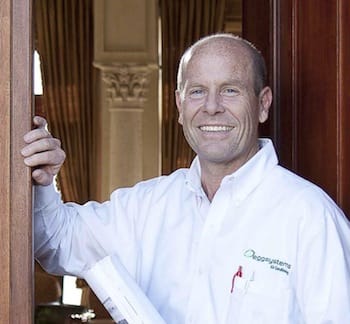 With natural gas prices reaching an all-time low last year ($2.75 per million BTU [MMBtu]), use has flourished as many have made the switch to natural gas heating. Other heating technologies that used to be cost competitive against natural gas have become less attractive. But history has shown us that we should not be fooled by low energy prices. In this 2012 article, Sustainable Plant reports, “Low natural gas prices won’t last, because way too many folks are making far too many plans to cash in.” Natural gas prices are increasing, and many are cashing in.
With natural gas prices reaching an all-time low last year ($2.75 per million BTU [MMBtu]), use has flourished as many have made the switch to natural gas heating. Other heating technologies that used to be cost competitive against natural gas have become less attractive. But history has shown us that we should not be fooled by low energy prices. In this 2012 article, Sustainable Plant reports, “Low natural gas prices won’t last, because way too many folks are making far too many plans to cash in.” Natural gas prices are increasing, and many are cashing in.
In a report that came out from the Energy Information Administration (EIA), a division of the US Department of Energy (DOE) on December 10, 2013 the Short-Term Energy Outlook is that the: “EIA expects that the Henry Hub natural gas spot price, which averaged $2.75 per million British thermal units (MMBtu) in 2012, will average $3.68 per MMBtu in 2013 and $3.84 per MMBtu in 2014.” That’s a 34% increase between 2012 and 2013 followed by an additional 4% increase between 2013 and 2014.
Green movement number two is on the way, and for more reasons than cold weather and increasing natural gas prices.
Geothermal HVAC systems are the unexploited frontier of green movements. Geothermal HVAC systems don’t get much press. You can’t see them (because equipment is all inside), you can’t hear them; the classic “out of sight –out of mind” scenario. But can geothermal heating systems handle really cold weather? What about retrofits and high installation costs? Let’s take a lesson from our neighbors to the north; Canadians know cold weather.
“Geothermal Utility Services” entities have provided consumers an easy way to upgrade to geothermal. OrcaEnergy has been successful as part of the market penetration of almost 40% of heating system replacements in Canada according to a 2011 report from the Canadian GeoExchange organization. When a customer decides to upgrade to geothermal HVAC, the Geothermal Utility Service provider covers the cost of the exterior geothermal ground heat exchanger/well system and then consumer pays a one-time fee for connection, and then a predetermined monthly charge. In this way the geothermal customer is only concerned about the cost of the geothermal heat pump upgrade.
The premium for installing a geothermal HVAC system is mostly contained in the cost of the geothermal source (the ground heat exchanger/well system). The geothermal heat pump installation is comparable to a high efficiency heat pump installation in cost (when subtracting the cost of the geothermal loop/well source). Taking into consideration the current 30% US federal tax credit, this will begin to make the installation of geothermal HVAC system more fiscally attractive than ever before.
Geothermal HVAC systems remove up to four times the energy consumption from the electrical grid per dollar spent than photovoltaic can add to the electrical grid per dollar spent,* making geothermal a better investment
Going “Green” usually denotes reduction of energy consumption and related costs, whether fossil fuel or all electric. The more peak load we can take off of the electrical grid, the fewer power plants we need. According to a McGraw-Hill Construction study released on November 13, 2013 at the International Summit at the Green Build Conference and Expo in San Francisco, “Green building has become a long-term business opportunity with 51% of study firms planning more than 60% of their work to be green by 2015, up from 28% of firms in 2012.”
Another point in the study is that in 2008, the motivating factor of green building was “…doing the right thing (42%)”. Now the top reasons for doing green construction are “…client demand (35%) and market demand (33%) – two key business drivers of strategic planning.” With green building projected to double between years 2012 and 2015, there can be no doubt that a “Green Movement Number Two” is underway. The question is, what green/sustainable technologies are going to be increasingly employed?
Answer: Geothermal HVAC. There are a lot of “Myths” out there. This article in National Geographic Energy does a good job of dispelling them. The bottom line is that Geothermal HVAC should to be part of your offerings. “Go Geothermal” and open up a whole new frontier for your business.
Jay Egg is a geothermal consultant, writer, and the owner of EggGeothermal. He has co-authored two textbooks on geothermal HVAC systems published by McGraw-Hill Professional. He can be reached at jayegg.geo@gmail.com .
*Based on installed cost of $5.90/watt from report “Tracking the Sun VI, An Historical Summary of Installed Price of Photovoltaics, July 2013 Lawrence Berkely National Laboratory” when compared to installed cost of electrically powered geothermal heating and cooling ($6000/ton) with a Coefficient of Performance of 4.0.




Join the conversation: